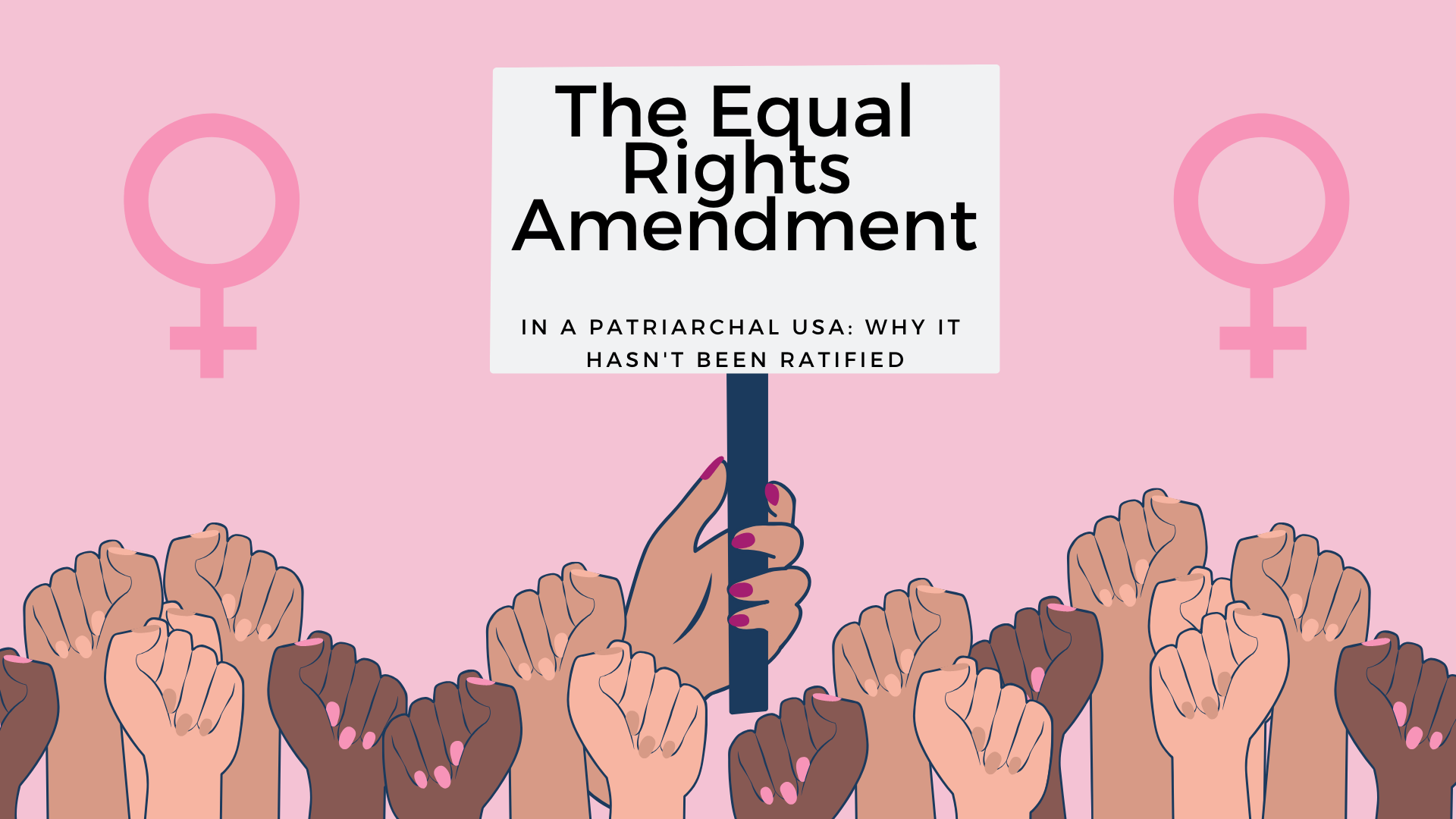Column: The Equal Rights Amendment and patriarchy
Two events occurred in early 2020 spurring hope for the ratification of the Equal Rights Amendment.
On Jan. 15, Virginia became the 38 state to ratify the Equal Rights Amendment (ERA). The requirement for passing this bill reached 75% with this state, qualifying it for potential ratification.
Nearly a month later on Feb. 13 both houses of Congress, the Senate and House of Representatives passed a joint resolution to remove the deadline for the ratification of the ERA.
It seemed that equal rights for women were imminent at this point.
My interest in the Equal Rights Amendment stems from my experience as a graduate student in 1983 when I was hired by the National Organization for Women to create an illustration for the program used for the national convention in Charleston, SC and to photograph the guest speaker, Sally Ride, the first female astronaut.
Based on the percentages of men in leadership positions in government and business, I believe patriarchal society is flourishing in the U.S. That means our social system places men in authority over women in all aspects, and women are expected to be obedient and submissive at all times.
The patriarchs find the equal rights amendment as a threat to their power, their control of women, their way of life and that of the wives and families who they support openly, as well as their mistresses, girlfriends or boyfriends, that depend on them as well.
The ERA states “Equality of rights under the law shall not be denied or abridged by the United States or by any state on account of sex.”
Alice Paul introduced the ERA to Congress in 1923, two years after white women won the right to vote with the passage of the 19th amendment.
The House of Representatives passed the ERA in 1970 and the Senate passed it Mar. 1972, sending it to the states for ratification.
Within 10 years that effort petered out three states shy of the 38 required for adoption. This was in part due to the efforts of Phylis Schaffly, a rightwing activist who rose to national fame (or infamy), with a mission to see that the ERA would never become law.
Schaffly contributed to its apparent defeat in 1982 when it did not meet the deadline for ratification. The resurgent interest in the ERA may be attributed to several factors including the 2016 electoral college election of an openly misogynist president, Donald Trump, the subsequent National Women’s March, and the Me Too movement.
These events arguably contributed to recent ratifications by Illinois and Nevada before Virginia.
On Dec. 19, 2019, anticipating Virginia’s recent ratification, the final one needed, Alabama, Louisiana and South Dakota filed suit in Alabama Federal Court, seeking to block David Ferriero, Archivist of the U.S and Obama appointee, from adding the ERA to the U.S. Constitution.
On Jan. 30, 2020, Ferriero said he would “take no action to certify adoption of the equal rights amendment” deferring to the Justice Department.
The same day, attorney generals of states that most recently voted to ratify the amendment- Virginia, Illinois and Nevada- filed suit in the U.S. District Court for the District of Columbia against the Archivist to force the ERA’s adoption.
Both cases, filed in different jurisdictions complicate matters further.
Then, Idaho, Kentucky, Nebraska, Tennessee and South Dakota previously voted to rescind their ratification.
Opponents feared the ERA will be used to overturn abortion restrictions.
Apparently they have no qualms about forcing their religious values on women. These same opponents also claim the ERA is invalid because the time allowed for adoption has expired.
They want to halt the process and require it to start over again. Advocates for the ERA believe it would strengthen legislation on issues ranging from pregnancy discrimination to equal pay to violence against women.
Current lawsuits will certainly delay resolution of the ERA adoption. If it goes to the US Supreme Court, it may be referred back to the Executive branch or to Congress which has the constitutional authority to make a decision.
Columns reflect only the opinion of the writer and do not necessarily represent the perspectives of Pacer Times.






